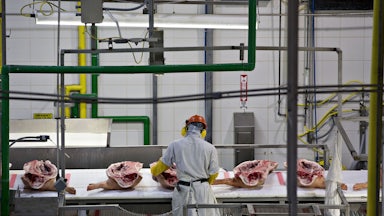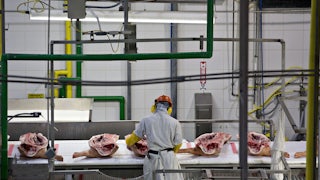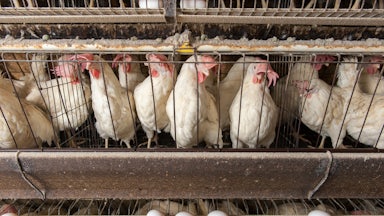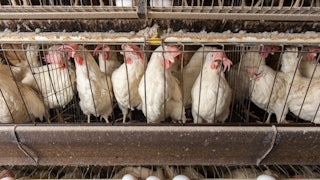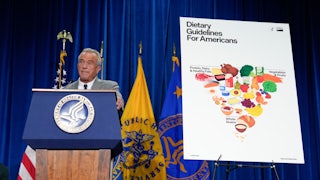The biggest bird flu outbreak ever recorded couldn’t have come at a worse time for a country still battered by Covid-19, as conservative lawmakers move to restrict the research that helps us understand such viruses. H5N1, which was first identified in 1996, has been moving among North American birds since December 2021, with devastating consequences for poultry farmers who have had to cull millions of birds. Consumers, too, have taken a hit as the culls contribute to soaring egg prices, though that may be due in part to opportunism from egg suppliers. Now, there’s evidence that avian influenza is also spreading among some mammals, like minks and sea lions, sparking panicked headlines wondering whether the virus could soon jump to and spread between humans.
Experts believe the current risk to most people is still low. But they say they’ll get much more concerned if they see two big things: mutations making human infection more likely or more serious, and more jumps between animals and humans. And to know for sure whether those two things are happening, and forestall catastrophe if they do, they might need more support for scientific research—an increasingly politicized field.
“We haven’t seen evidence yet that this virus is enhancing its ability to be a pandemic virus in humans, which is a little bit reassuring,” Richard Webby, a virologist at St. Jude Children’s Research Hospital’s department of infectious diseases, told me. “But having said that, we also know it’s only a few mutations away from being able to do it.” And he added, “If there is a flu virus that I would not like to see in humans, this is it, just because of its ability to cause disease, how much it spreads, how much it affects different animals.”
There are a few things that make this surge different from prior outbreaks of avian influenza. One is simply the magnitude. “Over the 25 years that we’ve been tracing this virus, right now the relative risk is probably as high as it’s ever been,” Webby said, “just because of the sheer number of different animals and wild birds that are being infected.”
Also, while previous outbreaks have tended to wane with the seasons, this current outbreak shows no signs of letting up—and H5N1 seems to be establishing new reservoirs in Europe and the Americas. This is the first time it’s been detected in South America, and only the second in North America. The spread on multiple continents “is really at a scale that we have not seen before,” Seema Lakdawala, an associate professor of microbiology and immunology at Emory University School of Medicine, told me. And the continued prevalence means “you continue to have the potential to gain characteristics that are going to make this virus transmissible in the human population from person to person.”
There’s a reason, however, that the virus hasn’t made that big jump yet: Avian viruses don’t do so well in humans. The better suited a virus is for birds, the less likely it is to replicate well in human cells. That’s not to say spread in birds is A-OK—it threatens poultry farmers’ livelihoods and can affect food security, and the more widespread a virus is in birds, the more opportunities it has for spillover into animals and people.
One reason dying minks and sea lions worries researchers is that, when H5N1 begins spreading among mammals, it can pick up alarming mutations that could cause the virus to bind to cells in different ways and make it easier for humans to get sicker. “Those types of mutations would be the worrying ones, in terms of when is it time to pack up your clothes and lock yourself in your pantry,” Webby said.
There are two ways that influenza mutates. One is the errors and changes that happen when a virus copies itself. The other is a process called reassortment, which is when two or more viruses switch up whole sections of their genomes. If a pig, for instance, is exposed to multiple flu viruses, it could swap the different parts and make new variants. If H5N1 were detected in pigs, that would be particularly worrisome, since they are very good at mixing viruses like this, Lakdawala said.
In the 25 years that H5N1 has been around, we’ve seen some of the mutations that happen as the virus copies itself, and we’ve gained some insight into which ones could be bad for us. “We know, from studies done a number of years ago, some of the types of genetic changes that these viruses would have to undergo to switch from being a chicken virus to being a human virus,” Webby said.
Because of the possibility for mutation as H5N1 continues to spread, transmission in mammals “raises the flags,” Webby said. “But we’ve also got to be a little bit cautious, not overinterpreting how much we actually know about this process of host range switching.” Plus, not all mammals are equally concerning, he said. “Some species put more pressure on the viruses to make it more humanlike than others.” The way flu viruses may mutate in animals, and the dangers they pose to humans, is “a little bit of a black box, to be honest,” he said.
In fact, we don’t even have a good idea of how many mammals have H5N1 right now, or encountered it in the past. Most of the animals now testing positive for the bird flu were examined because they died—making it difficult to know whether other animals have had mild or asymptomatic cases. “We’re just not doing that level of surveillance,” Lakdawala said.
The same goes for people, to
some extent. While the U.S. is very good at sequencing flu cases in humans to
see which versions of the virus cause illness, we know less about people who
encounter viruses like H5N1 but feel fine. “To be honest, there’s probably many
people around the country that have this virus in their freezer, with
a duck that they’ve shot, so there is a lot of human exposure going on,” Webby
said. “How much actual infection, we don’t actually have a good feel for.”
Monitoring exposures among humans—checking blood samples to see how many people
have encountered the virus—could give us an idea of whether, and to what
extent, we’ve already been infected by H5N1. “I do think that there is a
potential that we are missing some infections because they’re asymptomatic or
low symptomatic,” Lakdawala said.
But the very low rate of reported infections among people—in this outbreak, fewer than 10 people around the world have tested positive for H5N1, with one severe case in a child in Ecuador—is a sign that so far, the virus isn’t wreaking widespread havoc on us. “If there was an uptick in severe disease, flu-like illness, particularly offseason at a location where there is known activity of this virus, then that would ring warning bells for sure,” Webby said.
Another telling sign would be the spread of H5N1 from mammals to people, and, even more alarmingly, from people to people. So far, the only known cases have been among people with direct, usually prolonged, contact with infected birds. “We haven’t had any mammalian-to-human transmission events yet, so I think I’d be most concerned if we started to hear that,” Lakdawala said. And “until we hear about more human infections, I’m less concerned about human-to-human transmission—but that doesn’t mean that the risk is negligible.”
Perhaps the best news is we have vaccines—for people and for birds. Poultry and ducks are vaccinated against H5N1 in China, Egypt, and Mexico. Previously, the bird vaccine hasn’t been deployed in Europe or North America because the virus wasn’t a big threat there, and because it complicates the process of exporting poultry—but that may change now, experts said, with the European Union planning to vaccinate poultry in May. “We should be deploying vaccines” in poultry, Lakdawala said. “We can catch these pathogens in their animal hosts, which would then reduce the amount of that pathogen in the environment, in the reservoir, in nature, and reduce our risks of becoming infected.” Vaccines for animals like pigs, in which mutations could light the fuse of a pandemic, should also be considered, she said.
Anyone who comes into contact with birds, wild or tame, should wear protective gear like N95 masks. We also need to monitor more animals (and humans) to see where the virus is emerging and changing. And most importantly, researchers need to be able to move quickly to understand how the virus is changing, and what those changes mean for people.
“We need more of these viruses going into laboratories and being fully characterized in their risks,” Webby said. “Clearly, we have some mutations we watch out for, but there’s probably others we don’t actually know about.”
Yet proposals to curtail virological research could severely limit scientists’ understanding of outbreaks like this. In late January, Republican senators introduced a bill that would halt research on pathogens of pandemic concern. Important work on which mutations are most dangerous for people could be swept up in the zeal to end controversial, and often poorly defined, “gain of function” research, which some politicians see as dangerous because it involves deliberately breeding more virulent viruses to figure out how to defend against them.
This ongoing debate about the role and importance of research, and the harmful rhetoric about the work scientists do, can slow the race to find out more about emerging threats like H5N1, Lakdawala said. “How close are we to something that could become transmissible? The real answer is, we don’t know. And until we continue to do surveillance, and we ramp it up, and people have more of an appetite to know what’s out there—we’re not going to know the answers to those questions.”

